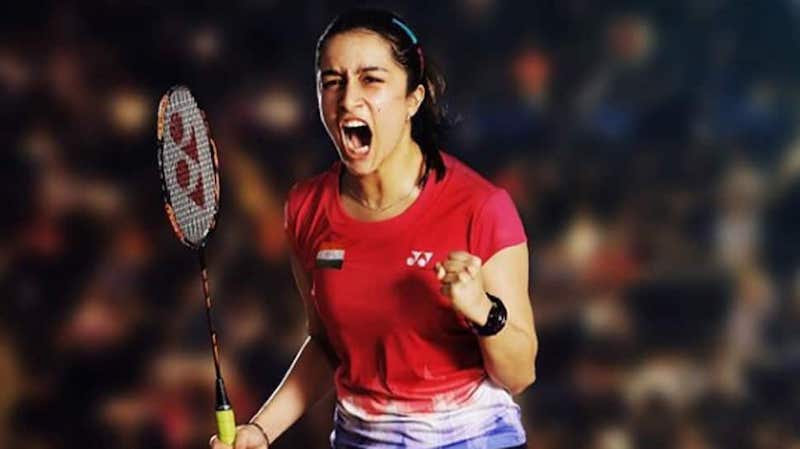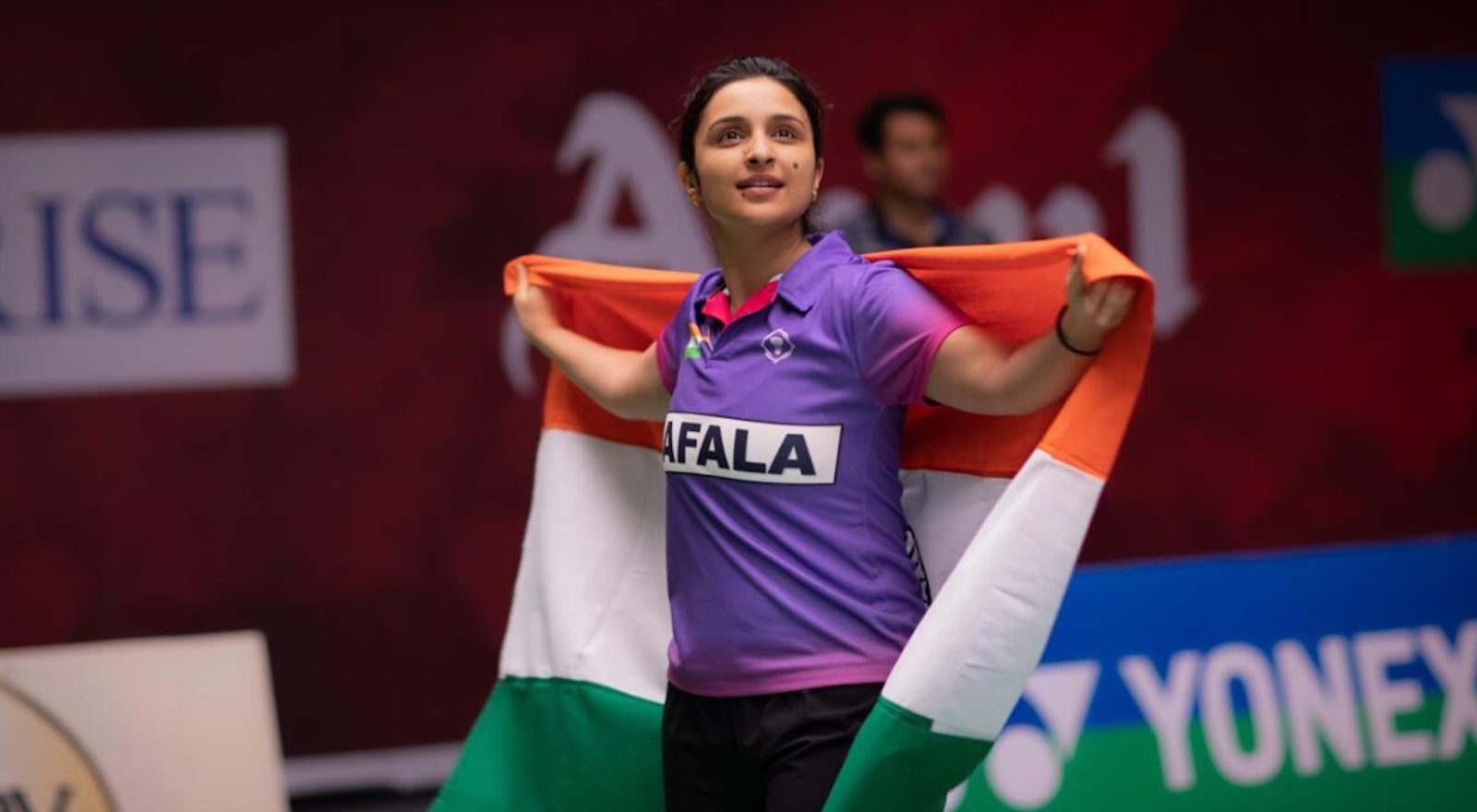The biopic “Saina,” by Amole Gupte, follows the career highs and lows of the former World No 1, “India ki beti” ace shuttler, Saina Nehwal. It also pays tribute to the people who immensely contribute to her resilience and unbreakable spirit.
However, the biographical drama fails to do justice to Nehwal’s life story and lands squarely in the mediocre realm. It epitomizes the three Cs of a typical sports film in India: clichéd, cheesy and cutesy, so therefore its hollowness shouldn’t exactly surprise you.
By now, you must have come to terms with the three factors that largely help in writing the screenplay for a sports film: a) an underdog from a middle-class Indian family (ideally, one from the heartlands) ; b) pushy parents who can be an ally, but also would go to extremes for you to win and c) a grumpy coach with ego issues. At least Manav Kaul (who plays Saina’s fictional coach, Rajan) does a fairly neat job, striking a balance between what is required of his character.
The film revolves around the badminton star’s rise to stardom while touching upon the challenges faced by her during the journey. The basic plot per se is fine and has everything—right from the maa ki mamta to the inspiring songs—that one would associate with a Bollywood movie.
“Saina” centers on the oversimplified approach of storytelling. Unlike recent biopics, it does not comprise the same level of intense scenes, sensational style, lighting, sets or the structure. It does not really reach its potential as the execution is half-baked, where serious issues are touched upon…but only in passing. Most of the subplots—right from the patriarchal attitude of society to the commercialization of sports—have not been explored properly.
The film tracks Nehwal’s life journey up to 2015, when she was announced World No.1. There are at least three chapters of her life that promise great potential to be the focal point of the film: her equation with the “bullheaded” mother during her early days at the institute, the relationship she shares with her beau Kashyap (whom she later marries), and the friction she has with her coach, Rajan.
Yet, we see each of these in snatches — which is not the main problem. The dynamics between Saina and her mentor/coach ‘Rajan’, too, have a bare-bones feel. This makes it difficult for fans to relate to the confrontation scene in the second half. Forget exploring any grey areas, the issue with “Saina” is its refusal to let the audience even get into her head and feel what she felt during the highs and lows of her career. Thus, most of the characters come across as caricatures, diluting the impact of the film further.
The one thing that “Saina” however, does get right is that it tries to touch upon the lows in the badminton star’s career. This, however, does not count for much as these episodes have not been sketched out properly. The makers of the film could have employed various cinematic techniques to highlight the impact of failure on Nehwal’s self-confidence, but fail to capitalize on this cinematic gold.
The climax of the film is also not as captivating as expected, lacking intensity. Although, it may, however, still click with die-hard badminton fans. The film begins with Saina’s 2018 commonwealth win, followed by her press conference, which actually starts the story in flashbacks, narrated by Nehwal (Chopra) herself.
One of the foremost critical pillars in Nehwal’s life is her mother (played by Meghna Malik), who used to play badminton while having her in her womb. The film takes us back to Nehwal’s childhood where we see her journey of becoming a professional player from the very first minute she was born.

Editing of the film is decent and will hold your attention and keep you on the edge of the seat because it barely allows the film’s pace to slow down. But what the film truly lacks is the context of structure and dialogues. Tacky composing and “mechanical plot points” makes you think twice about various conflicts and subplots.
“Saina” has nothing distinctive and extraordinary which one cannot get on Wikipedia. It tries to form an effect but fizzles to set up the core aspects. Things appear to happen exceptionally rapidly and he misses the minute components and detailing, just like the girls in the background doing random things when young Saina wins a medal or while playing in the camp.
Gupte, known for his movies like “Stanley ka Dabba” (2011), “Hawa Hawai” (2014), “Sniff” (2017); and he follows the same style in “Saina” but it falters cinematically, as there is barely any shot, which is able to introduce a “wow” moment.
One such “wow” element is the “Hall (use thick South Indian accent) of Mirrors” in which Saina gets to meet numerous girls like her who idolize her and that is by far the finest element within the entire film. And, it was brilliantly utilized as an allegory to reflect the true inner side of Saina. Shallow applauses, dialogues, layers and dimensions fall flat in forming the aura that is Saina, the world number one badminton champ. The film covers most of her life in a clichéd approach to storytelling and everything appears less demanding for her to attain; it is as if we are observing only the highlights, with no thrill at all.
However, definitely worth mentioning is the director’s brilliance at working with children and is a highlight of this film. Watching Mumbai’s talented 10- year-old shuttler Naishaa Kaur Bhatoye (as young Nehwal) displaying her skills on court is breathtaking. Not only does she resemble the real Nehwal, her mastery of the game gives the film an edge. She allows Gupte to capture the raw energy of an athlete and stoic ambition of Nehwal that he so craves to portray.Another interesting aspect of “Saina” is the casting of Meghna Malik and Subhrajyoti Barat, who play her parents, Usha Rani Nehwal and Harvir Singh Nehwal; the actors do a lot of the heavy lifting in a film that revolves around the character of their daughter.
With no sporting background, for Chopra to essay a badminton champion was a mighty challenge. While most certainly one doesn’t expect her to get the game and technique right in such a short span of time, you do expect her to get the emotion, body language and mannerisms right as an actor.
Chopra’s best isn’t enough as she gives an impression of not being in the moment in some crucial scenes. Her eyes occasionally conjure the sea of emotions one expects her to exude throughout. However, her ability to push herself for a character as physically demanding as this is admirable and not many would dare to take the bait. So props to Chopra for trying her best to mimic the body language of a champion, although the film conveniently fixes the match shots with close-up of the actor. But we could still see her visibly struggling to be Nehwal, sometimes borrowing the traits of her character from “Ishaqzaade.” And that oversized mole on her face is only the least troubling aspect of her performance.
Amaal Mallik’s music is on point and captures the pulse of the movie perfectly. Shreya Ghoshal’s “Chal wahi chalein” in particular and “Parinda” will stay with you.
“Saina” is the kind of biopic that shows commendable commitment to please the audience in ensuring that they leave the theater either smiling or with their chest swelling with pride. “Saina” is streaming on Prime.



